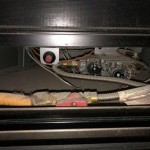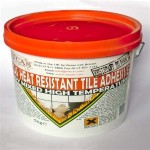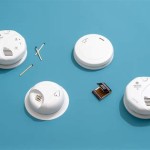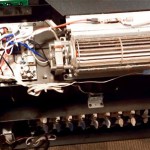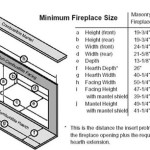Understanding Outside Fireplace Vent Covers: Function, Selection, and Maintenance
An outside fireplace vent cover, also known as a chimney cap or damper, serves a critical function in ensuring the safe and efficient operation of an outdoor fireplace. These covers are designed to protect the chimney flue from various external elements, prevent unwanted debris from entering the fireplace, and improve overall performance. Choosing the right vent cover involves considering several factors, including material, size, design, and local climate conditions. Properly maintained vent covers contribute significantly to the longevity of both the fireplace and the chimney system.
The primary purpose of an outside fireplace vent cover is to act as a protective barrier. Without a cover, rain, snow, leaves, branches, and animal nests can accumulate inside the chimney. This accumulation can lead to several problems. First, excessive moisture can corrode the chimney liner, potentially causing structural damage and costly repairs. Second, debris build-up can obstruct the flue, hindering proper ventilation and increasing the risk of carbon monoxide buildup inside the outdoor living space when the fireplace is in use. Third, animals, such as birds, squirrels, and raccoons, can build nests inside the chimney, creating fire hazards and causing blockages.
A well-fitted vent cover prevents these issues by providing a physical barrier against these intrusions. The design usually includes a mesh screen that allows smoke and gases to escape while blocking larger particles and animals. The cap itself shelters the opening from direct rainfall and snowfall. In regions prone to strong winds, some vent covers are specifically designed to reduce downdraft and prevent wind from blowing smoke back into the outdoor area.
Key Point 1: Material Selection for Durability and Longevity
The choice of material for an outside fireplace vent cover significantly impacts its durability and performance over time. Common materials include stainless steel, copper, galvanized steel, and aluminum. Each material offers different levels of resistance to corrosion, heat, and weather elements, and the optimal choice depends on the specific environment and budget.
Stainless steel is widely considered one of the best options due to its superior resistance to rust and corrosion. It is particularly suitable for coastal areas or regions with high humidity. Stainless steel vent covers offer excellent longevity and require minimal maintenance. While they may be more expensive than other options, their long-term durability often makes them a cost-effective choice.
Copper vent covers offer a similar level of corrosion resistance as stainless steel, but with a distinctive aesthetic appeal. Copper develops a patina over time, giving it a unique and attractive appearance. However, copper is generally more expensive than stainless steel and may be more susceptible to theft in some areas. Its conductivity also makes it more likely to attract lightning strikes, so proper grounding of the chimney system is essential.
Galvanized steel is a more budget-friendly option, offering reasonable protection against corrosion. However, the zinc coating can degrade over time, particularly in harsh weather conditions. Galvanized steel vent covers typically have a shorter lifespan than stainless steel or copper and may require periodic replacement or maintenance to prevent rust. They are a suitable choice for moderate climates where extreme weather conditions are less frequent.
Aluminum vent covers are lightweight and relatively inexpensive. However, aluminum is less durable than other materials and is more prone to damage from strong winds or impacts. Aluminum is also susceptible to corrosion in certain environments, particularly those with high levels of acidity. While aluminum vent covers may be adequate for mild climates and temporary installations, they are generally not recommended for long-term use in harsh conditions.
When selecting a vent cover material, consider the local climate, budget constraints, and desired aesthetic. Stainless steel and copper provide the best combination of durability and performance, while galvanized steel and aluminum offer more affordable options with shorter lifespans.
Key Point 2: Design Considerations for Optimal Performance and Safety
The design of an outside fireplace vent cover plays a crucial role in its ability to protect the chimney and enhance fireplace performance. Key design elements include the size and shape of the cap, the mesh screen configuration, and any additional features designed to improve airflow or prevent downdraft. Selecting a vent cover with an appropriate design is essential for ensuring safety, efficiency, and longevity.
The size of the vent cover should be carefully matched to the diameter of the chimney flue. A vent cover that is too small can restrict airflow, leading to poor combustion and increased smoke. Conversely, a vent cover that is too large may not provide adequate protection against rain and debris. Measure the flue opening accurately and consult with a professional to determine the appropriate vent cover size.
The shape of the cap also influences its performance. Common shapes include round, square, and rectangular. Round caps are often preferred for their ability to deflect wind from any direction, reducing the likelihood of downdraft. Square and rectangular caps may be more aesthetically pleasing for certain fireplace designs, but it's important to ensure they provide adequate protection from the elements.
The mesh screen is critical for preventing animals and debris from entering the chimney. The mesh size should be small enough to block small birds and rodents, but large enough to allow for unrestricted airflow. Stainless steel mesh is the most durable and corrosion-resistant option. The mesh should be securely attached to the cap to prevent it from detaching in strong winds.
Some vent covers include additional features to improve performance. For example, a wind directional cap is designed to rotate with the wind, minimizing downdraft and preventing smoke from blowing back into the outdoor space. Spark arrestors are required in some areas to prevent sparks from escaping the chimney and potentially igniting nearby vegetation. These features can enhance safety and efficiency, but it's important to ensure they are compatible with the specific fireplace design and local regulations.
When selecting a vent cover design, consider the size and shape of the chimney flue, the mesh screen configuration, and any additional features that may improve performance or safety. Consulting with a professional can help ensure the chosen vent cover is appropriate for the specific fireplace and environment.
Key Point 3: Installation and Maintenance for Long-Term Functionality
Proper installation and regular maintenance are essential for ensuring the long-term functionality of an outside fireplace vent cover. Incorrect installation can compromise the cover's effectiveness, while neglecting maintenance can lead to corrosion, debris buildup, and reduced airflow. Following best practices for installation and maintenance helps maximize the lifespan of the vent cover and protect the chimney system.
Installation of a vent cover typically involves attaching it securely to the top of the chimney flue. The specific installation method depends on the type of vent cover and the chimney construction. Some vent covers are designed to be clamped onto the flue, while others require mortar or screws for attachment. It's important to follow the manufacturer's instructions carefully and use appropriate tools and materials for the installation.
In many cases, it is advisable to hire a professional chimney sweep or contractor to install the vent cover. Professionals have the experience and equipment necessary to ensure the installation is done correctly and safely. They can also identify any potential problems with the chimney system and recommend appropriate solutions.
Regular maintenance of the vent cover involves inspecting it periodically for signs of damage or corrosion. Check the mesh screen for any holes or tears and repair them promptly to prevent animals from entering the chimney. Remove any accumulated debris, such as leaves, branches, and nests, to ensure proper airflow. Use a brush or vacuum cleaner to clean the mesh screen and cap.
In areas with heavy snowfall, it may be necessary to clear snow and ice from the vent cover to prevent blockages. Use a long-handled brush or broom to remove the snow and ice carefully. Avoid using sharp objects that could damage the vent cover or chimney.
If the vent cover shows signs of significant corrosion or damage, it may be necessary to replace it. Consider replacing the vent cover with a higher-quality material, such as stainless steel or copper, to improve its longevity and performance. Consult with a professional to determine the best replacement option.
Proper installation and regular maintenance are crucial for ensuring the long-term functionality of an outside fireplace vent cover. By following best practices for installation and maintenance, homeowners can protect their chimney system, improve fireplace performance, and prevent costly repairs.

Termination Cap Cover For Direct Vent Fireplace Draft Stopper

Outdoor Fireplace Vent Paint To Match Exterior

Termination Cap Cover For Direct Vent Fireplace Draft Stopper

How To Hide Unsightly Outdoor Vents With Repurposed Doors Interior Frugalista

Termination Cap Cover For Direct Vent Fireplace Draft Stopper

How To Hide Unsightly Outdoor Vents With Repurposed Doors Interior Frugalista

Termination Cap Cover For Direct Vent Fireplace Draft Stopper

Bug Proofing A Direct Vent Fireplace Doityourself Com Community Forums

Termination Cap Cover For Direct Vent Fireplace Draft Stopper
Direct Vent Fireplace Is Melting Our Siding And Soffit Would Love Your Advice Hearth Com Forums Home


